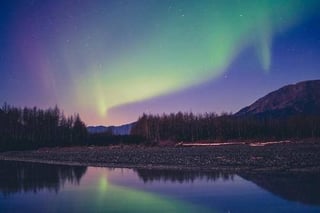Blog
See the latest content with helpful moving & storage posts and videos.
Alaska is a truly unique state in the U.S. It's the only one to exclusively share a land border with a foreign country. It's by far the largest in area, yet it has the third-smallest population and a population density of just one person per square mile.
The sizable state contains unique and beautiful topography and ecosystems while offering a variety of uncommon and sometimes exciting careers to those who call it home. Known by the nickname "The Last Frontier," the 49th state is alluring for a variety of reasons.
Of course, if you're considering moving to Alaska or have already decided to, you know what attracts you to this special part of America. Let's look at how the move will differ from similar efforts within the U.S. and how it's different.

Moving to Alaska: What remains the same
Heading to Alaska requires traveling through - or above - Canada or international waters, but the destination is still U.S. soil. You don't have to worry about any of the complicated immigration concerns that come along with establishing residency in a foreign country.
For starters, the currency won't change, it's relatively easy to transfer your driver's license, English is the most common language, and you'll pay taxes just the same as you would in any other state. Anything related to federal government responsibilities and benefits, from which side of the road you drive on to receiving Social Security payments once you become eligible, also remains the same.
Atlas is happy to help you move to Alaska from anywhere in the U.S. or Canada. Our experienced agents have tackled plenty of these moves in the past. Whether it's a relatively short trip from Washington State or a true cross-country journey from southern Florida, our movers and packers here to make sure your most important possessions arrive safe and sound.
Moving to Alaska: What changes
Alaska's very northerly location compared to the rest of the country means you need to make some important considerations, in terms of moving to and living in the 49th state. You'll have to account for the weather, of course. Livability pointed out that winter temperatures drop to as low as 50 degrees below zero, although there's a lot of variation when you take Alaska's large size into account. That likely means having to upgrade winter clothing. It's usually best to make those purchases after you move, so you won't have heavy coats adding to the cost of the trip.
There's also the dark winters and bright summers to deal with. Depending on where you live, the longest summer days may only see a sunset of a handful of minutes, with no period of complete darkness. Winter days, conversely, can be quite short. Consider whether you can handle these extremes. While plenty of people enjoy living in Alaska, it's not for everyone.
Expense is another important consideration. Investopedia pointed out that it's hard to nail down housing costs. The sheer size of the state and wide range of living options - from the big city to being the only person around for many miles - mean there are many price points. Food and commodities are somewhat more expensive, however. The average cost for food, living space, utilities, car insurance and gas comes out to $2,500 per month.
A move to Alaska also carries a somewhat more substantial price tag than many moves within the lower 48 states. However, by starting the moving process as early as possible, selling or donating things you don't need to lessen the load and finding a dependable mover, you can find a more affordable way to make The Last Frontier your new home.
